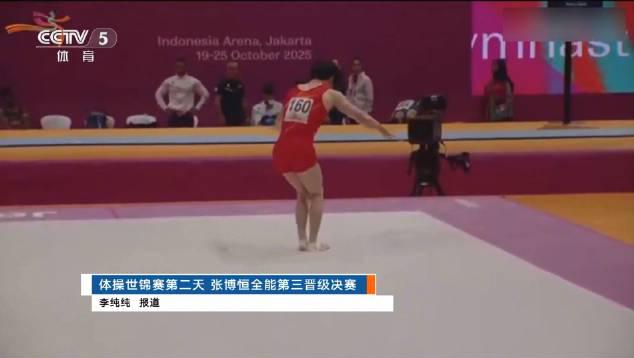My phone buzzed at 3 AM—a blurry video from my cousin in Tokyo, captioned ‘Watching Zhang Boheng’s routine with instant noodles again.’ In the grainy footage, his face glowed blue from the laptop screen, chopsticks paused mid-air as the gymnast swung on the parallel bars. ‘The stream keeps buffering,’ he complained, ‘and I missed his dismount.’
That pixelated video hit me harder than I expected. Zhang Boheng—the Chinese gymnast who’s become my cousin’s obsession—just qualified third in the World Championships all-around, trailing Japan’s Hashimoto Daiki. But here’s the thing: my cousin, studying abroad for five years, has never watched a single clean broadcast of their rivalry. ‘Geo-restricted,’ he’d sigh, ‘like I’m cheering from another planet.’
Remember Zhang’s shaky high bar routine in qualifications? The way his grip slipped during a release move—my cousin only saw the aftermath through fan-recorded clips on Twitter. Meanwhile, Hashimoto sailed through effortlessly, qualifying first. Their rivalry feels like that scene in Avatar where Jake Sully learns to ‘see’ the forest—you know there’s depth, but you’re stuck watching through a foggy window.
My cousin’s last clear memory of live sports was the 2018 Asian Games, streamed from our aunt’s living room in Guangzhou. Now? He cobbles together updates from Weibo snippets and VPN-glitchy replays. ‘It’s like trying to read a novel through keyhole glimpses,’ he joked, but I heard the frustration in his voice. When Zhang nailed his rings routine to reach that apparatus final, my cousin celebrated three hours late—after someone finally uploaded the clip to YouTube.
Here’s what struck me: sports aren’t just about scores. They’re about that shared gasp when an athlete sticks a landing, the collective groan at a near-miss. My cousin misses that connective tissue—the live reactions, the unedited tension. Zhang and Hashimoto’s ‘photo-finish’ rivalry deserves better than staggered, glitchy broadcasts that fracture the narrative.
So to everyone refreshing buffering screens overseas: you’re not just chasing a competition. You’re chasing that thread back home—the same thread my cousin clutches when he sends me those pixelated videos at 3 AM. What’s your most ‘almost saw it live’ moment? Drop it in the comments—let’s build our own highlight reel of near-misses and digital perseverance.
How to Use Sixfast: A Quick Start Guide

Sixfast is a lightweight acceleration tool designed to optimize your internet connection for gaming, streaming, and other online activities. Here’s how to get started:
1. Download and Install
Visit the official Sixfast website and download the client for your device (Windows, macOS, Android, or iOS). Follow the instructions to install.
2. Sign Up and Log In
Open the app and register with your email or phone number. You can also log in using WeChat, Apple ID, or other supported platforms.
3. Redeem Free Membership with Code “666”
After logging in, go to the “Profile” or “Account” section and look for “Redeem Code” or “Gift Code.” Enter 666 to receive free VIP membership time—perfect for trying out premium acceleration features.
PC:

mobile:

4. Select a Game or App
Choose the game or application you want to speed up. Sixfast supports popular titles like Genshin Impact, PUBG, Honor of Kings, and more.
5. Choose Region and Start Acceleration
Sixfast will automatically recommend the best server based on your location, or you can manually select one. Tap “Start” to begin acceleration.
6. Enjoy Low Latency
Once connected, launch your game or app and enjoy smoother, faster performance with reduced ping and lag.
Try Sixfast today and level up your online experience!


